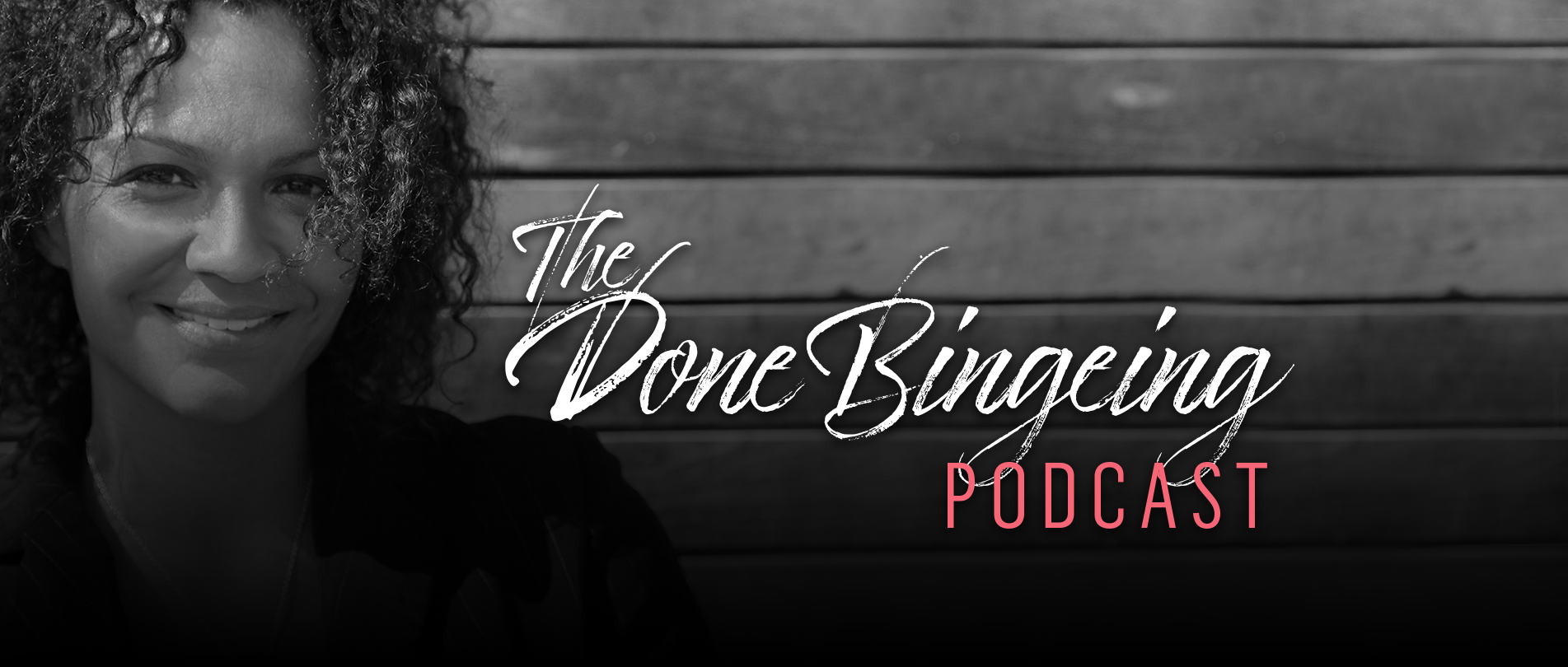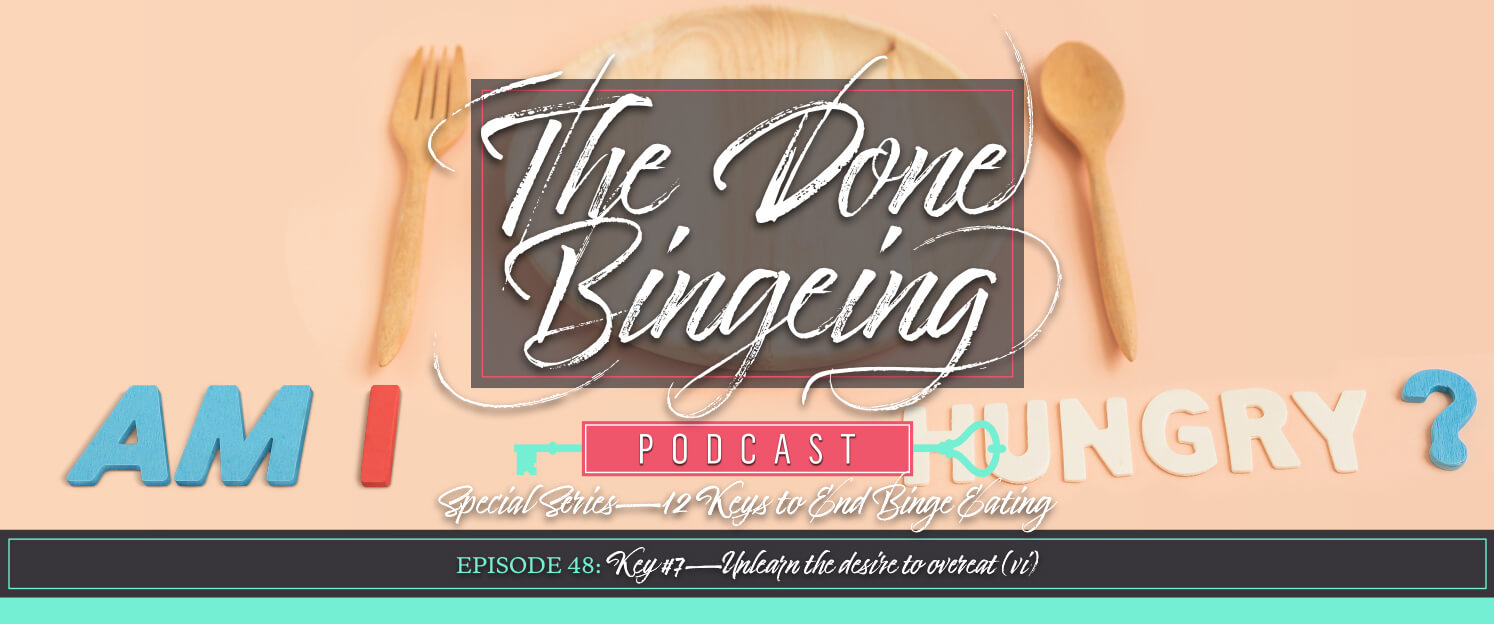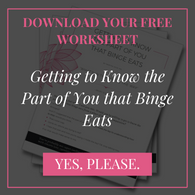
EP #48: Special series—12 keys to end binge eating, Key #7: Unlearn the desire to overeat (vi)

We’ve been trying to understand the desire to overeat from four perspectives: an emotional desire to overeat, a culturally conditioned desire to overeat, a neurological desire to overeat, and, now, a hormonal desire to overeat. This episode sets the stage to explore the role of hormones. Listen to the episode to find out more!
If you’re ready to apply the concepts in this podcast at a deeper level, sign up for a free private coaching session at www.holdingthespace.co/book!
Get full show notes and more information here: https://www.holdingthespace.co/48.
Episode: Play in new window
Subscribe: iTunes | Google Play | Stitcher | RSS
- Why it’s important to understand the role hormones play in our eating.
- How to distinguish between physical hunger and other kinds of hunger—and why it’s important to know the difference.
- How to check in about whether or not you’re physically hungry.
- The typical indications of physiological hunger.
- How to use a scale to assess your levels of hunger and fullness.
- If you’re ready to apply the concepts in this podcast at the deepest level, sign up for a free private coaching session at holdingthespace.co/book. A limited number of free sessions are available each month and the spots fill up quickly. So reserve yours now, before it’s gone!
What’s the link between soggy cardboard, an upturned table, and your eating? Keep listening!
Welcome to The Done Bingeing Podcast. This is the place to hear about how you can pair the emerging brain science about why you binge with powerful life coaching to help you stop. If you want to explore a non-clinical approach to end binge eating, you’re in the right place. It’s time to free yourself. You have more power than you know. And now, your host, Life and Weight-Loss Coach Martha Ayim.
Welcome to Episode 48 of The Done Bingeing Podcast and to part 14 of this special series, 12 Keys to End Binge Eating. We’ve been talking about the seventh key: Reduce the Desire to Overeat. So far we’ve talked about emotional eating, conditioned eating, and dopamine. In this episode, we’re setting the stage to talk about hormones.
So, in a way, we’re trying to understand the desire to overeat from four perspectives: an emotional desire to overeat, a culturally conditioned desire to overeat, a neurological desire to overeat, and, now, a hormonal desire to overeat.
Hormones are an important factor to consider in overeating because they play critical roles in when we feel hungry and when we feel full—not to mention how fat gets stored and released in our bodies.
So let’s begin this discussion with a peak into hunger and fullness itself.
It may seem super-obvious that that one of the important ways to know if you’re overeating is to ask yourself whether you’re hungry before you eat and whether you’re full after you stop.
So, let me ask you . . . Are you hungry right now?
When I ask you that question, do you have a clear sense of the answer? Are you really physically hungry or are you more kind of bored, nervous, or miffed? If it’s one of the latter, that’s more about emotional hunger and that’s why we nailed emotional eating first.
When I ask you if you’re hungry right now, do you look at the clock? Did you think about the last time you ate? Does the site of a carrot muffin in front of you influence you’re answer? If so, that’s more about conditioned hunger and that’s why we tackled that second.
When I ask you if you’re hungry right now, do you know you’re not physically hungry yet feel a strong urge to eat something? If so, that’s more about neurological hunger and about how sugar and dopamine work to set off a recurring desire for food. That’s why we explored that topic last week.
When I ask you if you’re hungry right now, do you swear you’re physically hungry even though you just ate not that long ago? If so, that’s likely hormonal, and that’s where we’re going next.
But before we get there, let’s clarify what physical hunger and fullness feel like and put some numbers to the experience of each.
Physiological hunger is a collection of physical sensations in your body. Its onset is often gradual and the sensations tend to come in waves. With all of our social conditioning to eat when we’re not hungry and with all of the emotional eating we tend to do, and will all of our consumption of high-sugar foods, it’s no wonder that many don’t have a clue what genuine physical hunger feels like.
So, let’s take some time to figure it out.
Many people tend to notice physical hunger in their stomach. People experience it differently, but some fairly typical initial signs of hunger include a gnawing or rumbling or empty feeling in the belly, or an audible stomach growl. Some people experience lightheadedness, mental fog, decreased energy, a slight headache, or a bit of weakness.
Emotional, or psychological, hunger, on the other hand, often comes in the form of instant urges and cravings. Urges and cravings tend to present as an urgent emotional desire for a specific food or a specific type of food, even if you’re not physically hungry. Emotional hunger is a hunger to soothe a psychological need.
One way to distinguish between physiological and psychological hunger is to imagine what would satisfy it. If even what you would classify as the blandest of foods would satisfy the hunger (for you, that might be a handful of raw almonds or a boiled egg), then there’s a good chance that we’re talking about physiological hunger. But if only the one food that’s consuming you right now will do (and it’s a typical binge food for you), then there’s a good chance that we’re talking about psychological hunger.
Ultimately, we want to eat when we experience physical hunger and use other strategies when we experience emotional hunger, conditioned hunger, or neurological hunger.
So, as you focus in on how physical hunger manifests in your body as a collection of physical sensations, I also want you to tune into the intensity of that hunger. And here’s where a scale can come in handy.
A scale can help you assess hunger and fullness to get in touch, and stay in touch, with physical sensations of physiological hunger and fullness. It helps you determine how hungry or full you are, and to put numbers to that experience.
So, imagine a horizontal line that extends from -10 on the left to +10 on the right.
-10 is a measure for hunger that’s so extreme that you’re too weak to move.
+10 is a measure for fullness that’s so extreme that you’re too stuffed to move.
0 is neutral, with no sensation of either hunger or fullness.
-1 is the tiniest whisper of hunger.
-2 is no longer a whisper, but a clear indication of hunger.
I think of a -5 as a hunger that’s now presenting as a distraction, and that distraction and discomfort increases in intensity from -5 all the way down to -10.
+1 is the first hint of fullness but without any sense of satisfaction.
+2 is just satisfied with a slight sense of fullness that leaves you feeling light and energetic.
I think of a +5 as fullness that now presents clearly as a distraction, and that distraction and discomfort increases in its intensity all the way up from +5 to +10.
So, when you ask yourself if you’re hungry or full, think about what physical sensations you’re feeling and about where you are on the hunger–fullness scale.
This is what a true physical hunger check-in is like. Notice that it doesn’t depend on whether you’re feeling sad, or on what time it is, or on whether you have an urge to eat. You don’t check in with your heart, your watch, or your brain. You check in with your body.
Now, we’ve just explored some huge pieces of the puzzle—emotional hunger, conditioned hunger, neurological hunger, and genuine physical hunger. But there’s more. We need to cover hormonal hunger because you may discover that you’re still overeating or bingeing but actually in response to true physical hunger.
Because your hormones dictate how hungry and how full you feel, we have to explore whether your hormones are sending you clear hunger and fullness signals or whether those signals are scrambled. For the signals to be clear, your hormones need to be balanced.
What we’re up to is putting together the pieces of a jigsaw puzzle.
Each piece has its edges. Some curved, some straight.
And we, of course, have our own edges, too. The edge of what we can bear, the edge of what we know.
Right now, we’re just focusing on the pieces with the straight edges. One straight edge is great. Two? Even better. The corner pieces will help us define the perimeter of what we need to explore.
Our bodies probably entered this life with the pieces intact. But overwhelming emotions, social mores, and synthetic foods pulled them apart. We are putting them back together, piece by piece, to find out what you need to do to stop bingeing or overeating.
I gave up on the puzzle many times in my 30-plus years of bingeing. I’d bawl over the pieces, whip them against the wall, or upend the table. And I’d storm away to Dairy Queen for Blizzards to match my mood.
But when the stomach ache came, and then the bloating and the crash, I would come to sooner or later and come back to the table.
Slowly, I’d turn it right-side up and then I’d look for the pieces. They were all there, just scattered and a little soggy.
Back on the table, in a different constellation than before I’d thrown them, some pieces now made a little more sense.
I would leave and then I’d return.
I would sob and then I’d stop.
I would scream and then I’d listen.
Half of this journey is about coming back when you want to go away.
Come back to the table. Pick it up if you have to, and the pieces, too, if you’ve flung them far and wide.
Come back to the table. You can stand or you can sit. But, whatever you do, pick up a piece of the puzzle.
Come back to the table. You can look or you can feel. But, whatever you do, find the straight edges first.
In time, the curves of one piece will nestle into the cervices of another. And, in time, you will have a whole image that makes sense.
But between now and then, you can’t give up on this journey.
And, if you do, you have to change your mind.
That’s it for Episode 48. Thank you for listening! If you’re ready to apply the concepts in this podcast at the deepest level, sign up for a free private coaching session with me at www.holdingthespace.co/book. I’m only able to offer a limited number of free sessions per month and the spots fill up pretty quickly. So reserve yours now, before it’s gone.
Thanks for listening to The Done Bingeing Podcast. Martha is a certified life and weight loss coach who’s available to help you stop bingeing. Book a free session with her at www.holdingthespace.co/book. And stay tuned for next week’s episode on freeing yourself from binge eating and creating the life you want.
- Never miss an episode by subscribing via iTunes, Stitcher, Google Play, or RSS.
- Leave a rating and review in iTunes.
- Have a question or topic you’d like to see covered on the podcast? Send it on over to support@holdingthespace.co.
- If you found this episode valuable, it would mean so much to me if you would please share it with your friends.
Imagine a horizontal line that extends from -10 on the left to +10 on the right. -10 is a measure for hunger that’s so extreme that you’re too weak to move. +10 is a measure for fullness that’s so extreme that you’re too stuffed to move. 0 is neutral, with no sensation of hunger or fullness.
- Where are you on the hunger-fullness scale right now?
- Where you were on the scale before your last meal?
- Where you were on the scale after your last meal?
- How does your fullness level change after a meal? (For some people, they stop eating at a certain number on the fullness scale, but then feel increasingly full over the course of the next hour or so. For some it goes down, for others it stays the same.)
- Where were you on the scale after your last overeating experience, and how did that feel in your body?
- Is there a point on the hunger-fullness scale that leaves you most vulnerable to overeat?
- Where are you generally on the hunger scale before you eat? Is this an ideal level for you? Why or why not? If not, what would be a better level and why? How can you make your way there?
- Where are you generally on the fullness scale after you eat? Is this an ideal level for you? Why or why not? If not, what would be a better level and why? How can you make your way there?
Thank you so much for sharing your thoughts with me.
Sending much love to you!






















0 Comments